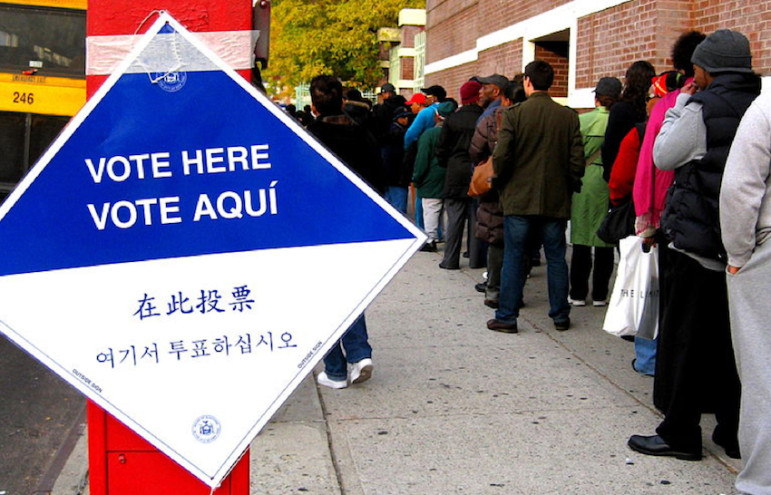
Allison Sikosrki
A line outside a voting site in Brooklyn in 2008. A more common site in city elections is poll workers with hardly anyone to serve.
It’s always dangerous for reporters to try to predict the news, but it’s safe to say tomorrow’s stories about today’s elections will have the phrase “low turnout” in their lede paragraphs, possibly with a modifier like “pathetically”, “ridiculously” or “typically” in front of it.
“Shockingly” won’t be a word you see, however, and not just because today’s elections end barely publicized and largely un-competitive races largely for positions that are obscure or poorly understood, like the state’s vast but largely invisible elected judiciary. New York has grown used to lousy turnout.
The 2013 general election for mayor attracted just 1.1 million of the 4.3 million people the State Board of Elections considers “active” registered voters. That year’s Democratic primary, which was more competitive, drew fewer than one in four active registered Dems. The statewide elections last fall were even worse. Even presidential races in the city regularly see a million-and-a-half registered voters stay home.
And those statistics just reflect turnout among who’s registered. Add in people who could register but don’t (the Census Bureau estimated that in 2014 there were 5.3 million U.S. citizens 18 or older in New York City) and you have a system where a tiny elite is driving the democratic ship.
Today a large coalition of groups launched an effort to change that – not by registering more voters, but by circulating a petition meant to pressure elected officials in Albany to revamp the voting machinery altogether. They want to see two weeks of early voting, including weekend days, so that people aren’t forced to make it to the polls within a single 15-hour period.
They also are backing two bills. One is the Voter Empowerment Act, which would allow state agencies to automatically register people, permit college kids to vote either at school or home, make it possible to change party affiliation closer to election day and to correct problems in registration on the day of voting, allow pre-registration of 16- and 17-year-olds and more.
The other, the Voter-Friendly Ballot Act, would change the layout of the ballot, which is still suited more to the old lever machines than the new optical scanners and can confuse people.
Check out the petition here. And tune in Wednesday, Nov. 4 at noon to BkLive (The show is live from noon to 1 on Cablevision 70, Time Warner 756, Verizon FiOS 46 and live-streaming here.) for a televised discussion of this effort and the politics of the issue.
There’s a sense of urgency to this push: As Gotham Gazette pointed out on Monday, New Yorkers will go to the polls several times next year: for a presidential primary, then Congressional primaries, then state-legislative primaries, and finally the general election.








